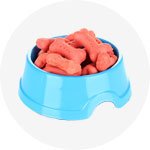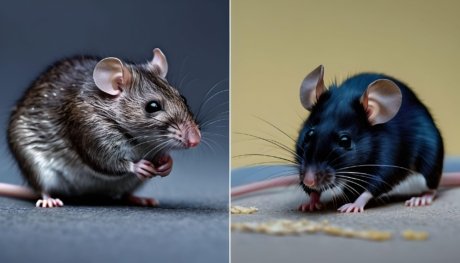Rat Bite Treatment – Infection, Diseases, Health, Medicies
One of the most common pests in the world is the rat. They may damage property and cause harm to people, among other issues. Rat bites are among the most worrying problems because, if left untreated, they can cause major health problems. Everything you need to know about Rat Bite Treatment, including symptoms, first aid, medical care, and prevention, will be covered in this article.
Rat Bite Treatment
If you have been bitten by a rat, it’s important to take prompt and appropriate action to prevent infection. Here are the general steps you should follow for rat bite treatment:
- Clean the Wound: Wash the wound with soap and warm water as soon as possible. Thoroughly clean the affected area to remove any dirt or bacteria.
- Control Bleeding: If the bite is bleeding, apply gentle pressure with a clean cloth or bandage to control the bleeding. Elevating the affected limb can also help reduce bleeding.
- Apply Antiseptic: After cleaning the wound, apply an antiseptic solution (such as hydrogen peroxide or rubbing alcohol) to help prevent infection.
- Use an Antibiotic Ointment: Apply an over-the-counter antibiotic ointment, such as Neosporin, to the wound to further reduce the risk of infection.
- Cover the Wound: Cover the wound with a sterile bandage or dressing to protect it from further contamination.
- Seek Medical Attention: Even if the wound seems minor, it’s advisable to seek medical attention, especially if you are unsure about the rat’s health or if the wound becomes red, swollen, or shows signs of infection.
- Tetanus Shot: If you haven’t had a tetanus shot in the last five years and the wound is deep or contaminated, you may need a tetanus booster. Consult with a healthcare professional for advice on tetanus vaccination.
- Watch for Signs of Infection: Keep a close eye on the wound for any signs of infection, such as increased redness, swelling, pain, or the presence of pus. If you notice these signs, seek medical attention promptly.
Rat Bite Overview
Rat bites, though relatively uncommon, can pose significant health risks and require prompt and appropriate attention. These incidents are not limited to encounters in pest-infested areas; even domesticated rats may bite if provoked, frightened, or mishandled. Understanding the proper steps for rat-bite treatment is crucial for preventing infections, complications, and ensuring the overall well-being of individuals who find themselves in such situations.

I. Immediate Response
1. Clean the Wound
Rat bites can introduce bacteria into the wound, increasing the risk of infection. The first step in treating a rat-bite is to gently clean the wound with mild soap and water. Thoroughly washing the affected area helps remove potential contaminants and reduces the risk of infection.
2. Control Bleeding
If the bite results in bleeding, it’s essential to control it promptly. Apply gentle pressure with a clean cloth or sterile bandage to the wound. Elevating the affected limb can also assist in minimizing blood flow and reducing the risk of excessive bleeding.
II. Seek Medical Attention
1. Professional Assessment
Regardless of the perceived severity of the rat bite, seeking professional medical attention is crucial. A healthcare professional can assess the wound, checking for signs of infection or other complications, and recommend appropriate treatment.
2. Tetanus Shot
Rat bites may introduce bacteria that could lead to tetanus, a potentially serious bacterial infection. It’s essential to ensure that your tetanus vaccinations are up to date. If not, seek a tetanus shot promptly, as this can prevent or mitigate the risk of tetanus-related complications.
III. Antibiotics and Wound Care

1. Prescription Antibiotics
In some cases, healthcare providers may prescribe antibiotics to prevent or treat infections resulting from the bite. It’s crucial to take the entire course of antibiotics as directed, even if the wound appears to be healing well.
2. Proper Wound Care
Following medical advice, proper wound care is paramount to prevent complications. Keep the wound clean and dry, change bandages as instructed, and monitor for any signs of infection, such as increasing pain, redness, swelling, or the development of pus.
IV. Watch for Complications
1. Signs of Infection
Vigilance is essential post-treatment. Be watchful for any signs of infection around the bite area. If you notice increasing pain, redness, swelling, or the presence of discharge, contact your healthcare provider promptly.
2. Fever and Systemic Symptoms
A fever or other systemic symptoms could indicate a more severe infection. If you experience these symptoms after a rat bite, seek medical attention immediately, as it may be indicative of a systemic infection that requires swift intervention.
V. Prevention is Key

1. Avoiding Rat Bites
The most effective treatment for a rat bite is prevention. Taking precautions to avoid situations where rat bites may occur is crucial. This includes handling rodents with care, especially in areas with known rat infestations.
2. Rodent Control Measures
Implementing effective rodent control measures is crucial for preventing rat bites in the first place. This involves sealing entry points, practicing proper waste management, and, if necessary, seeking professional pest control services to address infestations.
Symptoms of Rat Bite
The first thing to look for when determining if a rat has bitten you is the symptoms. Rat bites can cause a wide range of symptoms, depending on the severity of the bite and the type of rat. The symptoms of a rat bite include pain, swelling, and redness around the bite site. You may also experience fever, chills, nausea, vomiting, and fatigue.
First Aid for Rat Bite
First aid is given as part of the rat bite treatment process. The bite area must be properly cleaned with soap and warm water if you have been bitten by a rat. Any debris, bacteria, or dirt that could have got inside the wound will be helped to eliminate by doing this. When you’ve cleaned the bite site, treat the wound with a clean, sterile dressing. For pain and swelling relief, you can also use an ice pack. However due to the fact that might result in frostbite, it’s important to avoid applying ice straight to the skin.
When to Seek Medical Attention
It’s important to get medical assistance if rat bite symptoms last longer than a day or two. However, if the bite site becomes infected, the pain is excruciating, or the swelling extends past the bite site, get medical attention. The development of a fever or other symptoms should prompt you to seek medical assistance.
Prevention of Rat Bites
The easiest approach to stop getting bitten by rats is to stay away from them. This process converts your house clean and devoid of clutter, covering any cracks or openings, and storing food in an appropriate manner to discourage rats. If touching rats is necessary, make sure to protect yourself by using gloves and other safety gear. In order to avoid having them bitten, it’s also essential that you keep your pets away from rats.
Other Health Concerns Related to Rat Bites
Rat bites can cause many health issues in addition to the possibility of infection. Rat-bite fever, for example, which can cause flu-like symptoms and in severe cases, death, can be spread by rat bites. Moreover, fleas, which are known to spread illnesses like the bubonic plague, can be carried by rats. To prevent getting into touch with rats, it is essential that you take all necessary precautions.
Conclusion: Responsibly Addressing Rat Bites
While rat bites are not an everyday occurrence, knowing how to respond comprehensively is essential for minimizing health risks. Timely and appropriate rat bite treatment, coupled with preventive measures, ensures that the impact of such incidents is mitigated. Remember, seeking professional medical advice is crucial to address potential complications and to safeguard your health effectively. Stay informed, stay safe, and take proactive steps to prevent rat bites wherever possible.
Frequently Asked Questions on Rat Bite Treatment:
-
What should I do if a rat bites me?
If a rat bites you, the first step is to wash the bite thoroughly with soap and warm water. Apply a clean sterile dressing to the wound and use an ice pack to reduce swelling and pain. Seek medical attention if symptoms persist or worsen.
-
How long does it take for a rat bite to heal?
The healing time for a rat bite depends on the severity of the injury. Mild bites can heal in a few days, while severe bites can take several weeks or even months to fully heal.
-
Can rat bites be fatal?
Rat bites can be fatal if left untreated, especially if the wound becomes inflamed. In addition, rats can carry diseases that can be transmitted through bites, such as rat-bite fever and bubonic plague.
-
Do all rats carry diseases?
Not all rats are disease carriers, but they can carry various diseases such as hantavirus, leptospirosis and salmonellosis. It is important to take all necessary precautions to avoid contact with rats and their droppings.
-
How can I prevent rat bites?
The best way to prevent rat bites is to avoid contact with rats. Keep your home and surrounding areas clean and tidy, close all entry points to your home and store food properly to prevent rodents. If you must handle rats, wear gloves and other protective equipment.
-
Can I treat a rat bite at home?
In the Case of a rat bite, first aid can be given at home by washing the wound with soap and warm water and securing it with a sterile bandage. However, if the symptoms persist or worsen, consult a doctor.
-
How is a rat bite infection treated?
A rat bite is usually treated with antibiotics to prevent the spread of infection. In severe cases, surgery may be necessary to repair damaged tissue or nerves. It is important to see a doctor if you suspect an infection.
Recommended:





























